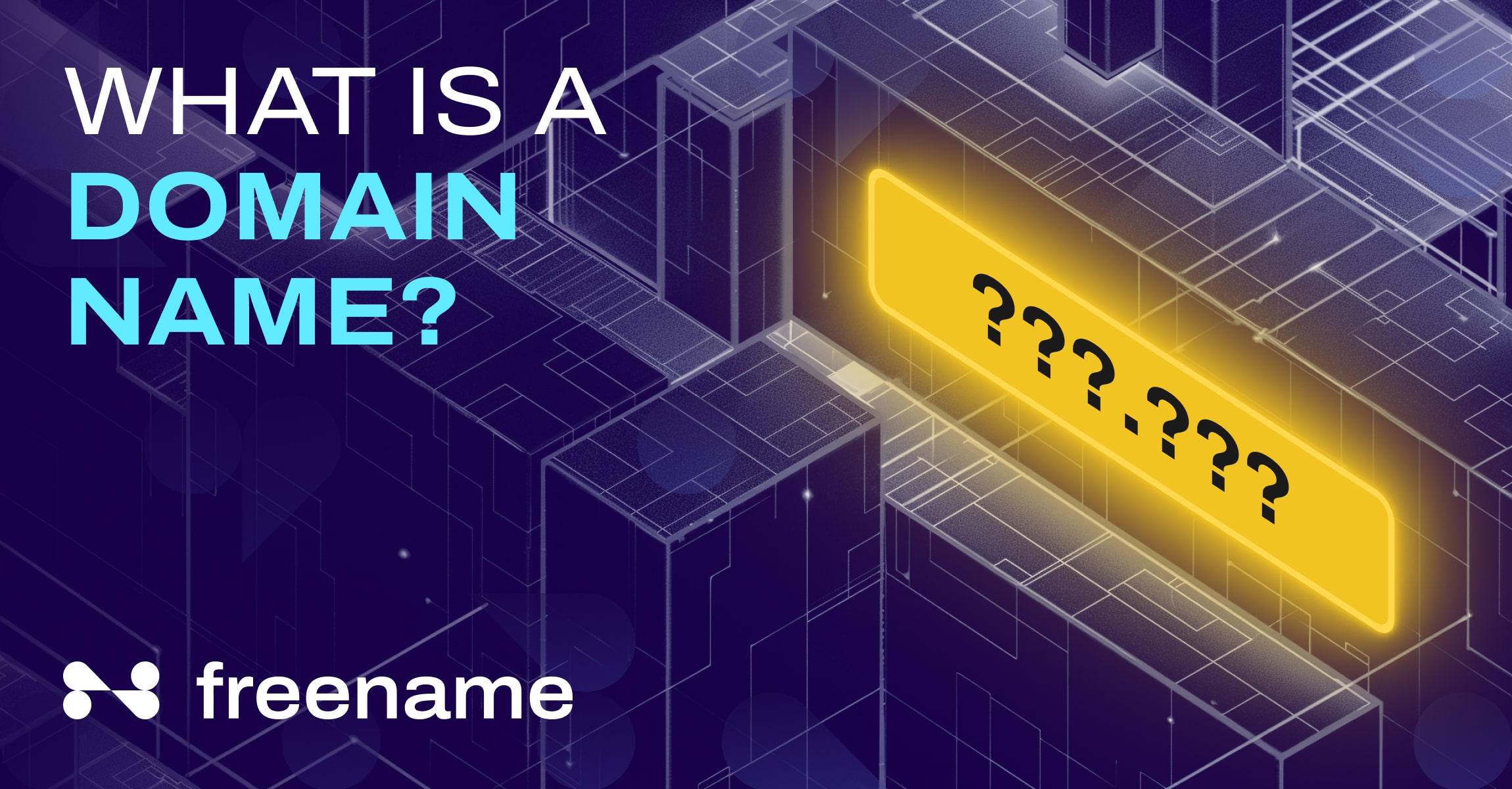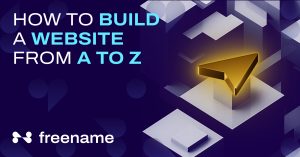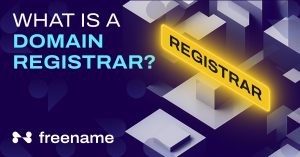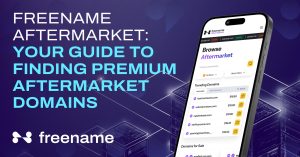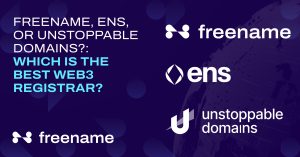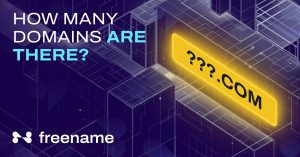Your domain name serves as your unique web address, and it is a core part of your online identity. But what is a web domain precisely? This article breaks down how domain names work, explains their structure, and details all you need to know about purchasing a domain name and maintaining your online presence.
The Internet is an infinite universe of interconnected information, services and communities. The greatest danger for Internet users is the same one that gripped the navigators of the oceans: how to find your course, and avoid getting lost in a flood of websites? The whole process of buying a website domain can be overwhelming sometimes.
Just as a physical address allows us to find an island, or a home, so the domain name allows us to identify a specific piece of information online. However, the world is rapidly changing, and consequently, things are getting more complicated. For instance, do you know the difference between a URL and internet domain?
Domain Names: what are they and how do domains work
The traditional domain names consist of an easily recognizable string of letters, numbers and occasionally hyphens (e.g., domain.me), usually resembling some words, that uniquely identifies a website on the internet. Understanding how domains work is crucial for anyone looking to establish an online presence.
In the deep architecture of the Internet, computers use a digital IP address to locate each website (e.g.172.67.193.14). Domain names “replace,” for the benefit of the human surfer, the real IP address (Internet Protocol Address) composed of hard-to-memorize numbers.
You can think of domain names as the numbers in your cell phone’s address book (“Mom”), which replace the actual phone numbers. To function, domains rely on a system called the Domain Name System (DNS). In short, when you enter a domain name on your browser (e.g., my.domain.me), it sends a query to the DNS resolver, which, like a huge phone book, associates the name the human user has used with the corresponding IP address, and proceeds to connect your device with the requested server.
What do they look like?
A classical domain name includes two or three parts:
- TLD (Top-Level Domain): the suffix at the end of the domain name like .com, .org, .net, or country-codes as .us (United States) or .uk (United Kingdom). You can find national, generic or infrastructural domain extensions.
- SLD (Second-Level Domain): the core of your domain name, it identifies and represents the name of the website (e.g., Freename in freename.io or freename.com).
- Subdomain (Optional): this optional part is sometimes placed before the SLD to organize different sections of a website (e.g., blog. in blog.mydomain.com).
The subdomain ‘www.’ (which stands for World Wide Web) is the most frequently encountered. This prefix was standard for most domain names. However, the so-called ‘naked domains,’ which do not display it, have become increasingly popular.
What’s the difference between URLs, IP addresses and Domain Names?
The domain name is the alphanumeric string used to identify a website. In contrast, the URL (Uniform Resource Locator) is the complete web address used by computers to access a requested website. It includes technical details such as the protocol used (e.g., http or https) and the specific path to the page you want to reach within a website.
So freename.io is a domain name. Instead, an address such as ‘https://freename.io/how-to-create-your-own-top-level-domain/’ is a URL which points to a specific page of the website hosted on the freename.io domain (namely, the FAQ section).
To sum up:
- Frename.io = domain name
- https://freename.io/how-to-create-your-own-top-level-domain/ = URL
- 191.176.23.150 = IP address
Traditional domain names ownership and future trends
This traditional system is primarily managed by ICANN (Internet Corporation for Assigned Names and Numbers). Typically, a domain is acquired through a domain registration process with licensed registrars. This often involves “renting” or “leasing” the domain, and therefore the registrar’s renewal fees and terms and conditions will apply.
Buying a domain name: Web2 vs Web3 domain registrants
The traditional way to approach domain name purchase and ownership, as we have just seen, does not allow the user to fully own a domain name. By this way, he becomes the domain registrant. Under Web2 protocols the user, after performing a domain search for an available name on an ICANN-accredited platform, selects a registration period, pays and gets the right to use the domain for a certain amount of time. Continued usage rights is contingent upon periodic domain renewal fees.
Web3 domain acquisition, which is currently thriving, operates on blockchain technology. When the user purchases a domain name, it is stored in his or her personal crypto wallet as a Non-Fungible Token (NFT). Such domains offer expanded utility, functioning as a universal username or decentralized identity across diverse digital environments.
Domain Host, Name Server and Secondary Domains
There are some other aspects you might want to know about domain names, regarding domain hosts and name servers. In short, a domain host manages your domain’s DNS records through name servers. They are essential for translating domain names into IP addresses and enabling online services like websites and email. Website hosting is often bundled with domain registration services, providing a complete package for your online presence.
Moreover, many domain name registrars allow you to designate secondary domains within your primary account. These secondary domains, though fully dependent on the primary domain’s status (e.g. in case of suspension or non-renewal), allow those who are associated with these additional domains to access the same suite of services of the primary domain user.
Why do domain names matter
Domain names establish your identity online, and they make your brand easily recognizable. Today’s businesses and projects are primarily run through the internet: having an outstanding online presence is essential for growth.
How to choose a domain name
Domain names directly impact accessibility, allowing users to find and return to your site without needing to remember complex IP addresses or full URLs. A good domain name boosts credibility and professionalism. It is as fundamental as a good website architecture or strong SEO practices.
How To Identify And Buy a Domain
When considering what to consider when buying a domain name, there are some golden rules which you should keep in mind:
- Choose a trustworthy registrar. The registrar you use can deeply affect both your and your customers’ overall experience. Check their DNS management options and the domain privacy conditions, and, if possible, set up an email address with a consistent domain.
- Keep your domain name clear and brand-aligned! Establish a strong link with your brand. The domain name is going to be your address on the internet: keep it simple and try to avoid uncommon words or spellings which may confuse the user.
- Consider registering different extensions for your domain. To protect your domain, the best way is often to register the same name with various domain extensions like .com, .net, and .org. You might also want to register very similar domain names if you fear that someone may try to poach your audience. With Web3 domains, these concerns fade away due to their unique ownership and identity characteristics. Last but not least with decentralised web you can purchase and own your own TLD .myname forever.
- Check domain availability. Before settling on a domain name, use a domain name generator or perform a thorough domain search to ensure your desired name is available.
- Understand the registration process. Familiarize yourself with how buying a domain works, including the steps involved in domain registration and transfer if needed.
By following these guidelines and understanding the intricacies of domain names, you’ll be well-equipped to establish a strong online presence for your brand or project.

